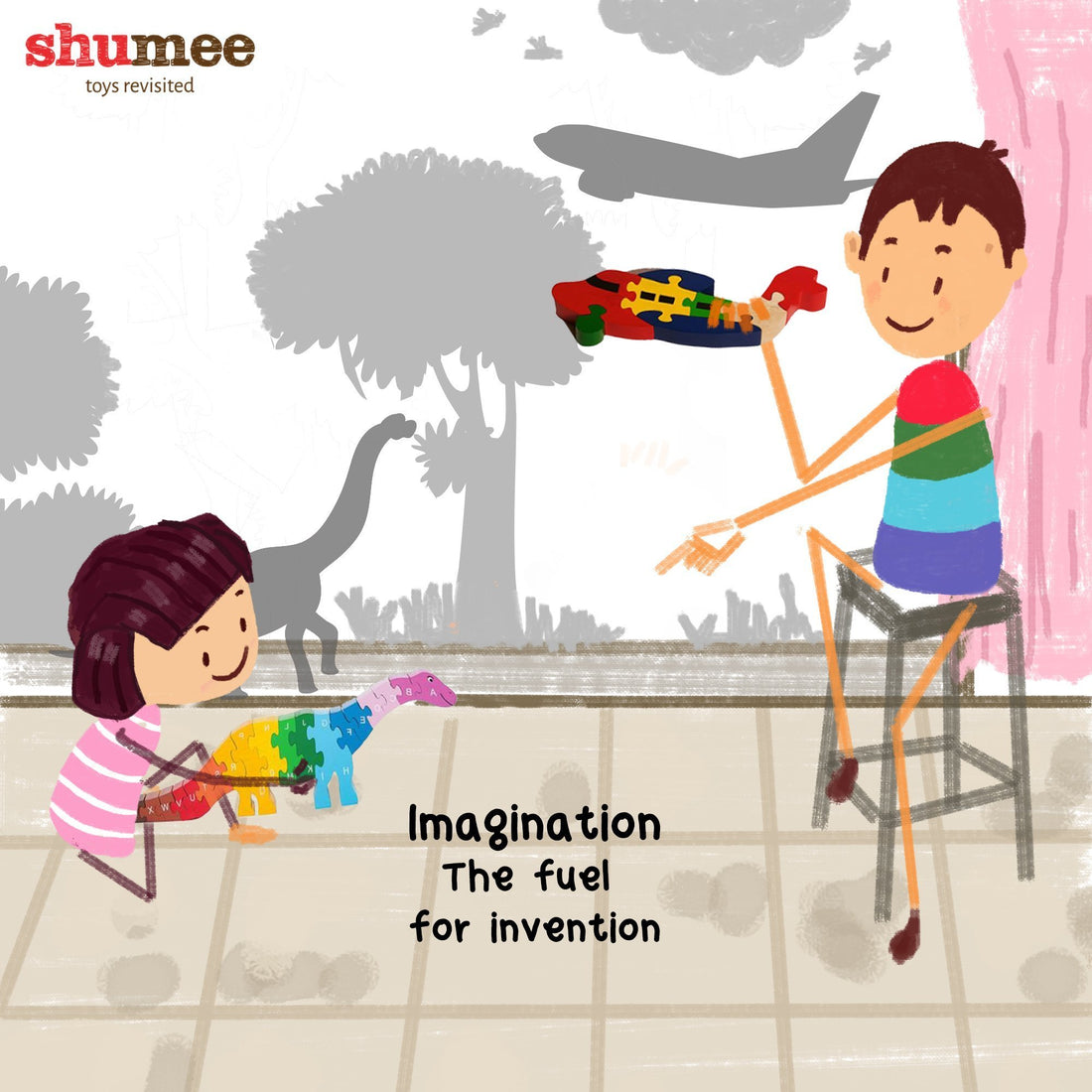Did you know that Braille, earmuffs, the popsicle and even the calculator were invented by kids? Louis Braille was 15 when he came up with the idea of using raised dots to communicate with embossed paper.
Children are natural inventors. And this seeming flair is triggered by one thing – imagination. Invention is usually nothing but the power of imagination made real. From storytelling to free play, to games that are made up on the spot, children find ways to harness their imagination in their day to day life.
The ability to ask “Why?” and more importantly, “Why not?” is probably the start point of many inventions. And kids do this almost instinctively. Give them 3D puzzles for kids featuring a dino or a snail, along with an astronaut and you will soon have a genre-hopping story that involves both (and probably a saucepan for a UFO) being developed because, well, ‘Why not?”
You may have noticed that when your child imagines a story, there are no natural boundaries. Only an adult would think about the logic (or lack thereof) of an astronaut from the 21st century interacting with creatures from 65 million years ago. For your little one, they are just characters in a story. This ability to mix and match using blocks or stamp sets and draw from seemingly disparate fields makes invention possible.
For example, Braille was inspired by “sonography,” a code language read by fingertip so that soldiers could communicate at night without light or making noise. Going back and forth plowing rows in a field gave 14-year-old electronics prodigy Philo Farnsworth the idea to project a recorded image by scanning electrons back-and-forth across a glass screen. The result? The world’s first electronic television.
As parents, we revel in their imagination and it is quite common for us to get infected with the enthusiasm and wonder that makes our children’s world. The important thing is to keep that wonder alive, and to provide more opportunities for our children to expand their exposure to more and more stimuli. But with a caveat – that the stimulus does not begin and end with a screen. Toys that encourage open-ended free play can be a great catalyst for kids to explore realms of fantasy and wonder.
What, you might ask, does this have to do with my toddler playing with alphabet blocks or making a design with stamps? We would just like to pay tribute to the achievements of these creative kids on Kid Inventor’s Day, celebrated on January 17th (Benjamin Franklin’s birth anniversary). And to remind us of the importance of empowering imagination and invention. Even if the invention is a rocket driven by a dinosaur with a crew of wooden fish.
